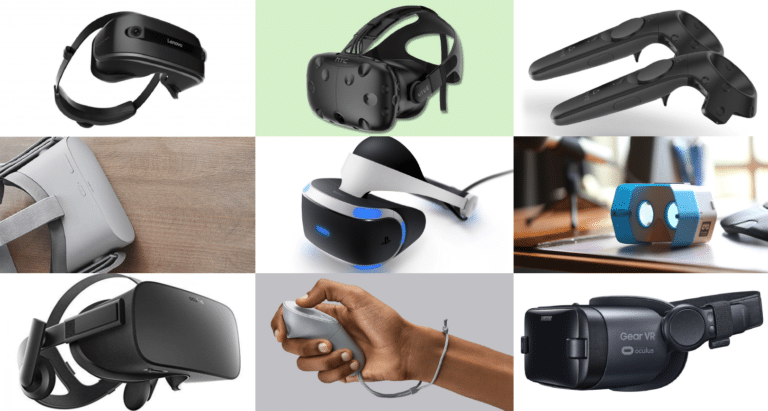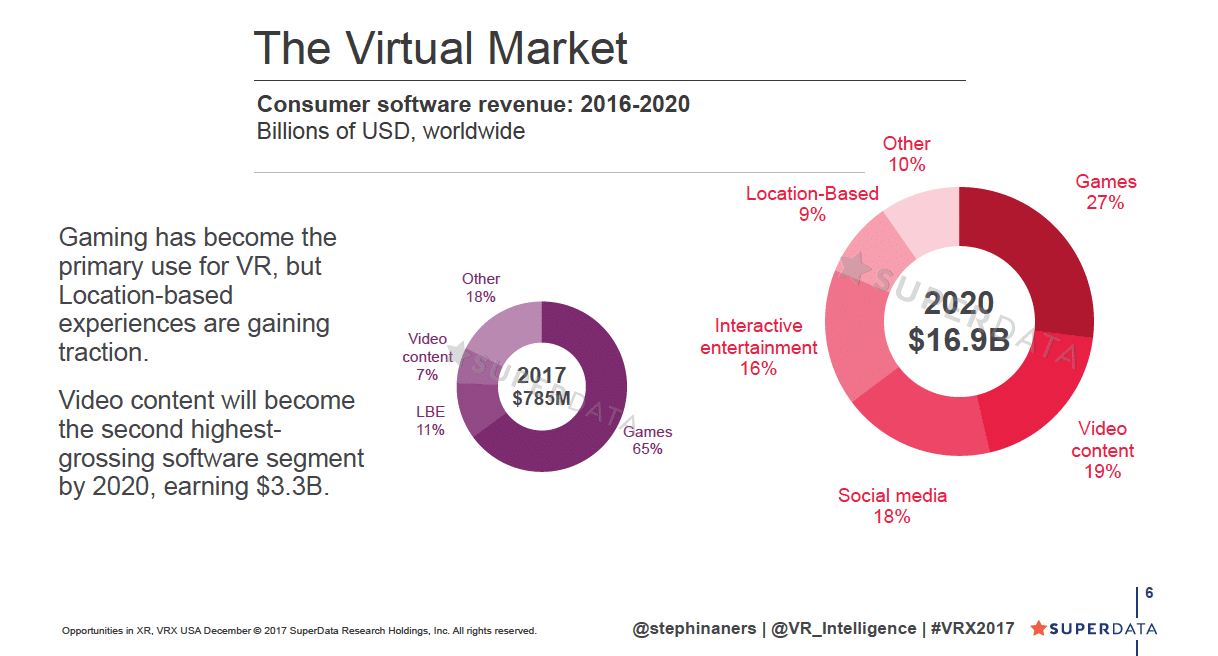
Data Point of the Week is AR Insider’s weekly dive into data from around the XR universe. Spanning usage and market-sizing data, it’s meant to draw insights for XR players or would-be entrants. To see an indexed archive of data briefs and slide bank, subscribe to ARtillry Pro.
There’s evidence that entertainment is catching up to gaming as a VR use case. Activities like watching 2D movies in 3D space are increasingly popular. Though this flies in the face of advice to “think native,” there’s logic in meeting consumers halfway with the media they’re accustomed to.
“I chuckle whenever we have promotional stuff where you have athletic people swinging around wildly and ducking and bending with VR,” said Oculus CTO John Carmack at OC5. “That’s not gonna be the reality of the way people are using this product most of the time.”
Carmack revealed during the same keynote (video above) that the split of movies to gaming among Oculus Go users is 70/30. That’s not surprising as Oculus Go is tuned for “lean back” experiences. But entertainment sees the majority of action across all Oculus headsets.
“Don’t be surprised when people wind up watching a lot of movies and TV shows,” he said. “At the very start of Oculus, I had bet someone else that it’s gonna be more than 50 percent of the time not in games, and I’ve been smug about winning that bet pretty decisively for a while.”
More evidence comes from recent Oculus data that only 20 percent of users have full room scale setups. That doesn’t preclude gaming because it can be played from a stationary position, such as cockpit games. But it’s telling about somewhat tepid interest in VR’s full-octane experiences.

In our consumer survey data with Thrive Analytics, the most demanded VR activity was watching movies (see above). This could be skewed based on headset ownership, which is led by GearVR, but several Tier-1 HMD owners were also represented in the survey (breakdown here).
As for how this translates to revenue, Superdata projects gaming’s dominance to shift to a fragmented set of formats including video and social media. Specifically, games held 65 percent of VR software revenue in 2017, which is projected to shrink to 27 percent by 2020.

Lastly, Unity’s Timoni West presented data at L.E.A.P. showing the breakdown of content built on Unity (see video below). Entertainment took the top spot at 33 percent, while games was 13 percent. This is a meaningful indicator, given Unity’s market share of VR content creation.
Collectively, the above is admittedly a smattering of apples-to-oranges data points, but there are telling indicators nonetheless. We’ll continue tracking these signals and integrate them with our own market sizing. We’ll also have the next wave of Thrive Analytics VR survey data soon.

https://www.youtube.com/watch?v=vV8oGahOSgc&feature=youtu.be&t=8459
For deeper XR data and intelligence, join ARtillry PRO and subscribe to the free AR Insider Weekly newsletter.
Disclosure: AR Insider has no financial stake in the companies mentioned in this post, nor received payment for its production. Disclosure and ethics policy can be seen here.
